Sign In
Welcome to AI Checker Sign in to continue your exploration of our platform with all its exciting features.
Forgot Password?
Don’t have an account ? Sign Up
Forgot Password
We'll Send You An Email To Reset Your Password.
Back to Login
Sign Up
Embrace the Future with AI Checker Sign up now and let's rewrite the possibilities together.
Already have an account? Sign In
Enter OTP
We'll send you an email to reset your password.
Back to Login
Enter OTP
We'll send you an OTP on your registered email address.
Back to Login
Confirm Password
Please enter your new password.
Is GPT-5 Content Detectable?
 Nathan Porter
Nathan Porter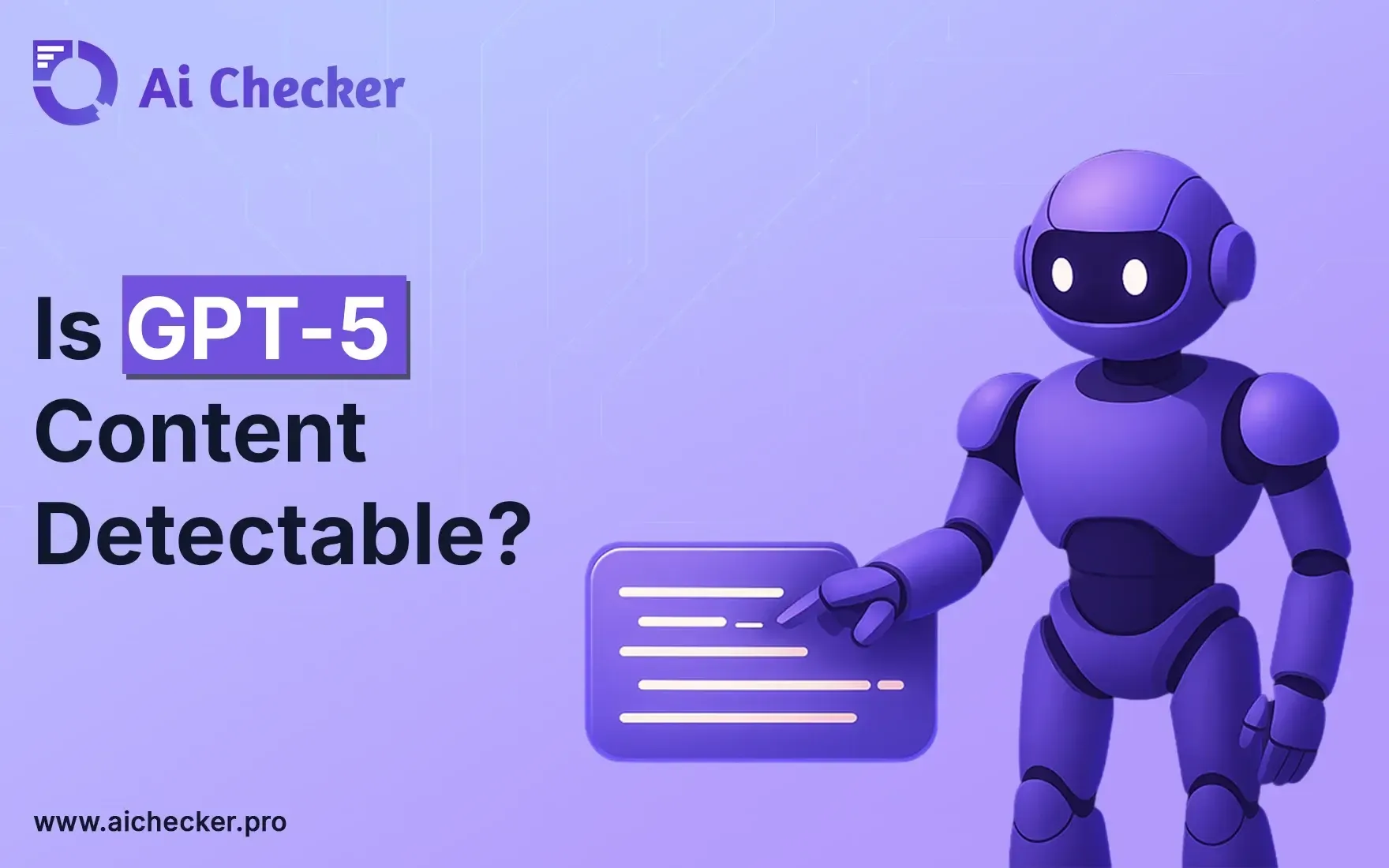
TABLE OF CONTENTS
What is GPT-5?
Current State of AI Content Detection
Detection Methods and Technologies
Challenges in Detecting GPT-5 Content
Testing the AI Detector Accuracy
- Aichecker.pro
- Assignmentgpt.ai
- Bypassai.io
- GPTZero
- Originality.AI
Accuracy and Limitations
Implications for Different Sectors
Future of AI Detection Technology
Best Practices for Content Verification
Conclusion
FAQs
The impact of Artificial Intelligence (AI) models such as GPT-5 is changing how people write, communicate and carry out businesses online. But the use of these potent tools comes with concerns about originality, plagiarism and trust. As generative content grows with the adoption of GPT-5, opportunities and risks have heightened for students, educators, publishers, researchers and marketers alike.
aichecker.pro is the leader in ensuring everyone retains trust and originality within their content. This article will discuss how GPT-5 works, what the state of AI content detection looks like now, available detection techniques for AI content, what it means for the new models of AI, and what makes aichecker.pro a strong line of defence against AI-generated content.
What is GPT-5?
GPT-5 is OpenAI's newest and most advanced language model, with the GPT5 release date officially announced for August 2025. This revolutionary OpenAI GPT5 model not only produces and analyzes human-like text but also takes images, audio, and even video as inputs. Chat GPT5 is faster, smarter, and closely represents the writing styles of humans better than ever, and outputs a document (or image) that is near indistinguishable from one composed by a real human. GPT5.0 contains better reasoning ability, and contextual meaning, and the outputs look like humans wrote them.
Key features:
Multiple input types (text, image, audio, video).
Delivers hyper-personalized content.
Improved reasoning and factual accuracy over previous models.
Better ability to keep track of complicated instructions.
This has all increased the utility of AI, but frustratingly has made AI detection much more difficult.
Current State of AI Content Detection
As AI writing continues to improve, the demand for detection needs to improve also. AI detection tools for AI-generated writing have quickly ramped up the pace, and the tools are evolving themselves, looking for unique "fingerprints" of things coming from these models, including the new GPT-5. GPT-4 outputs could be detected with more than 95% reliability across the best detectors. However, with the OpenAI GPT5 launch, the landscape has shifted dramatically, making detection (and therefore detection tool needs) more urgent and difficult.
Detection Methods and Technologies
Detecting AI-generated text relies on a blend of technical approaches. The most effective detection strategies employed—and constantly refined—are:
1. Statistical Analysis
AI-generated text often shares subtle statistical patterns. Detectors examine characteristics such as frequency of word choice, relative sentence length, variability in vocabulary, and punctuation usage. For example, even with the improvements of GPT-5, it still tends to repeat certain punctuation (such as em dashes) or has very consistent sentence structure compared to human writers.
2. Machine Learning Classifiers
Contemporary detectors are machine learning classifiers trained on very large datasets of human and AI content/mental models. A classifier might learn to detect nuanced differences in phrases, coherence, and fluency of language. As AI models LikeChat gpt5 become better, the classifiers are retrained on the new samples to ensure the detectors are ahead of the available algorithms.
3. Watermarking Techniques
Some of the detection methods use digital "watermarks": hidden patterns embeded in AI text are digitally hidden, and detectors use additional scanning procedures to look for these watermarks. However, GPT5.0 and similar models do not always use official watermarks, so the use of these methods for detection is limited in their spreadability.
4. Linguistic Pattern Analysis
AI language models often produce uncreative, excessively formal, or repetitive text. Advanced detectors analyze linguistic aspects such as phrase repetition, level of formality, inflated vocabulary, and logic of thought patterns to identify suspect writing.
Challenges in Detecting GPT-5 Content
1. Advanced Language Capabilities
GPT-5 writes with amazing fluency. Its outputs have depth of reasoning, clever analogies, and context-dependent humor that are difficult to tell apart from expert human writing.
2. Human-Level Writing Style
This model can approximate human quirks, like a random variance between formal and informal tones and variety in sentence structure. It produces diverse natural output, blurring the line between human and AI writing.
3. Understanding Context
GPT-5 is much better at utilizing context. If provided the entire context of an assignment or paper, it can write essays with relevant examples, logical structure, and expertise that appears substantial, even when autogenerated.
Testing the AI Detector Accuracy
We made a decision to test Isgen AI. The purpose was to see if it could accurately detect 100% AI-produced material. We also conducted a comparison with AIChecker.pro, which is a well-known competitor.
Step 1: Generating Content Using ChatGPT-5
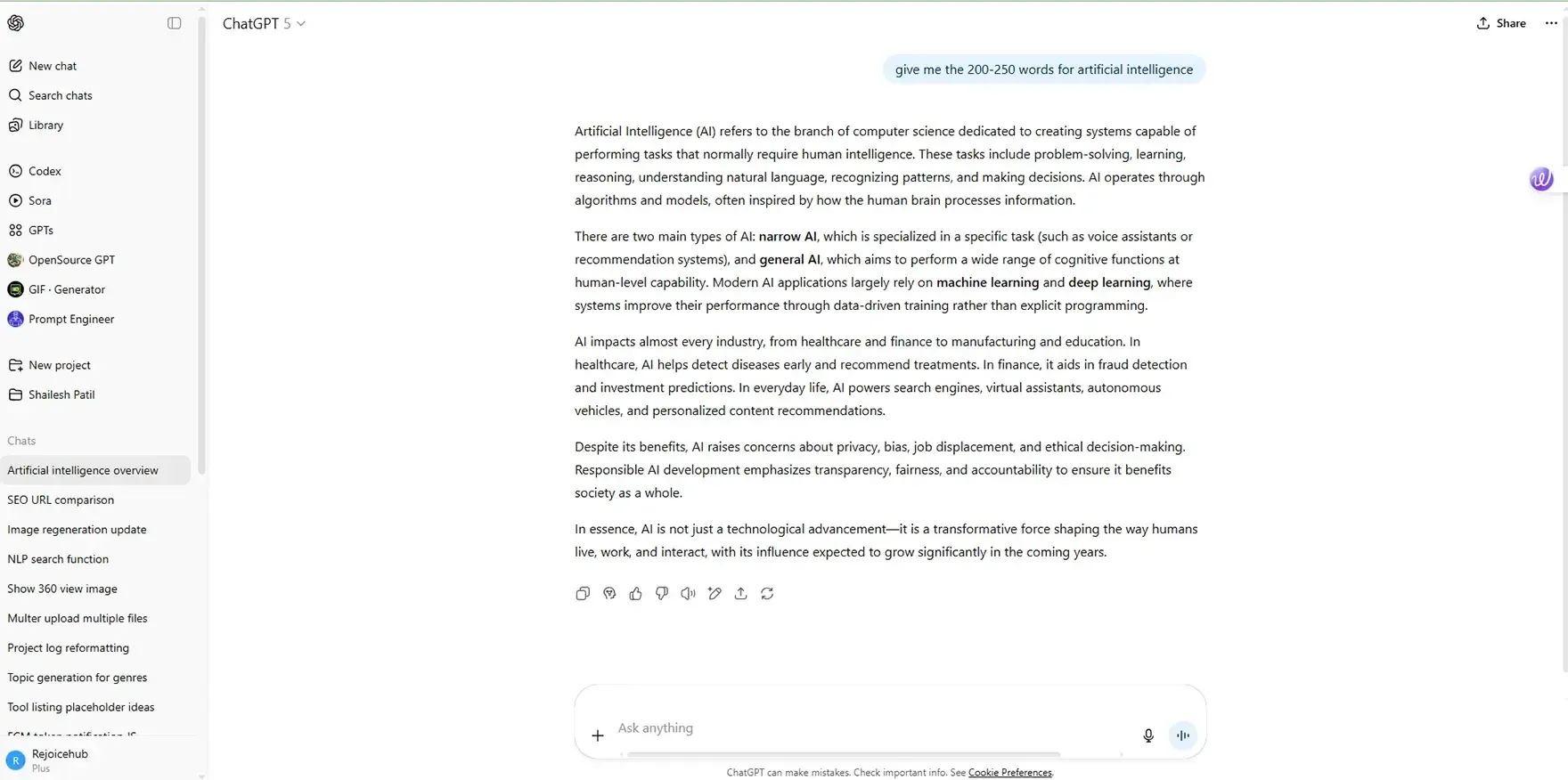
Step 2: Comparing Detection Results
Using ChatGPT, sample text was created and then copied for the purpose of testing with AI detection.
The original AI text was tested on:
1. Aichecker.pro
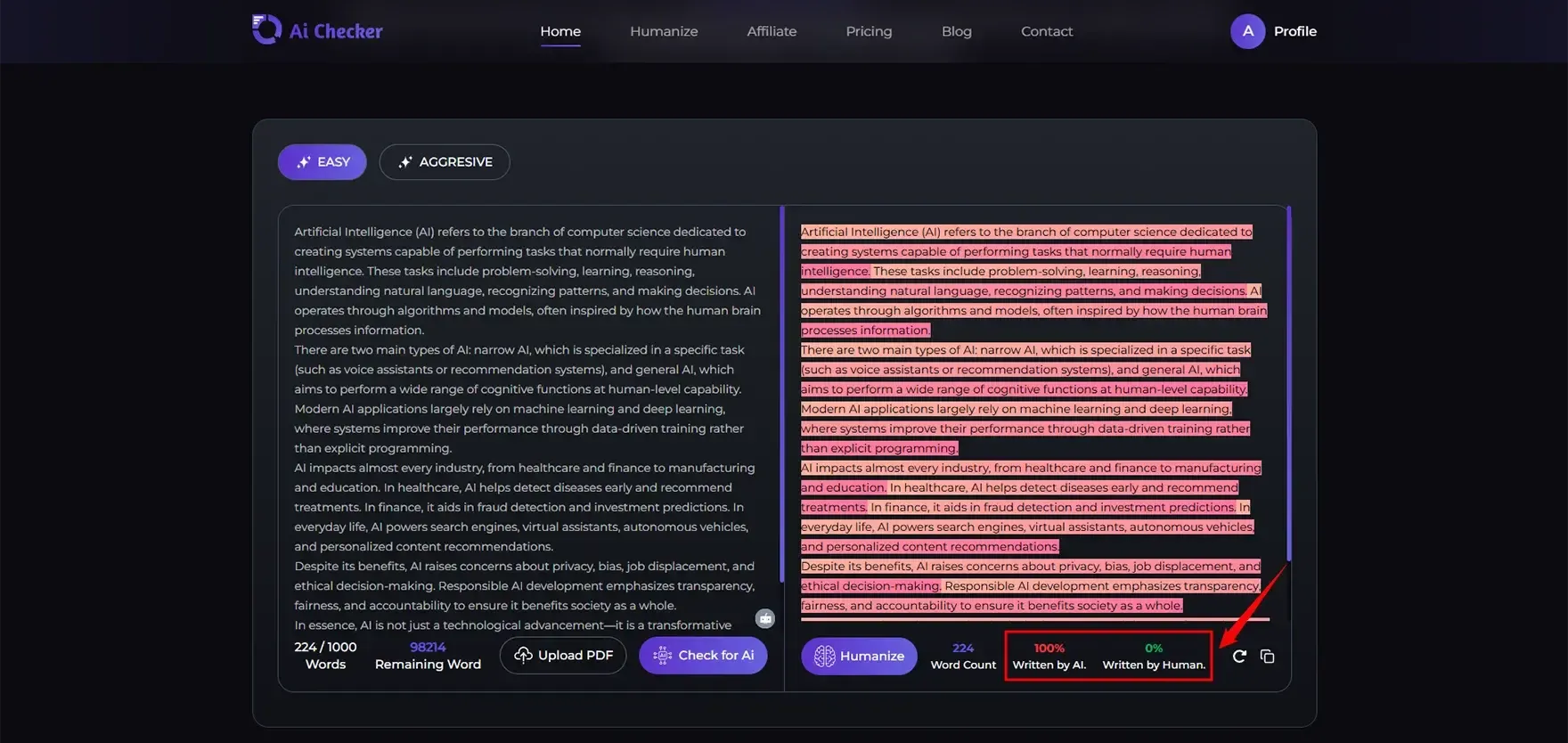
Result: 100% AI, 0% Human
2. Assignmentgpt.ai
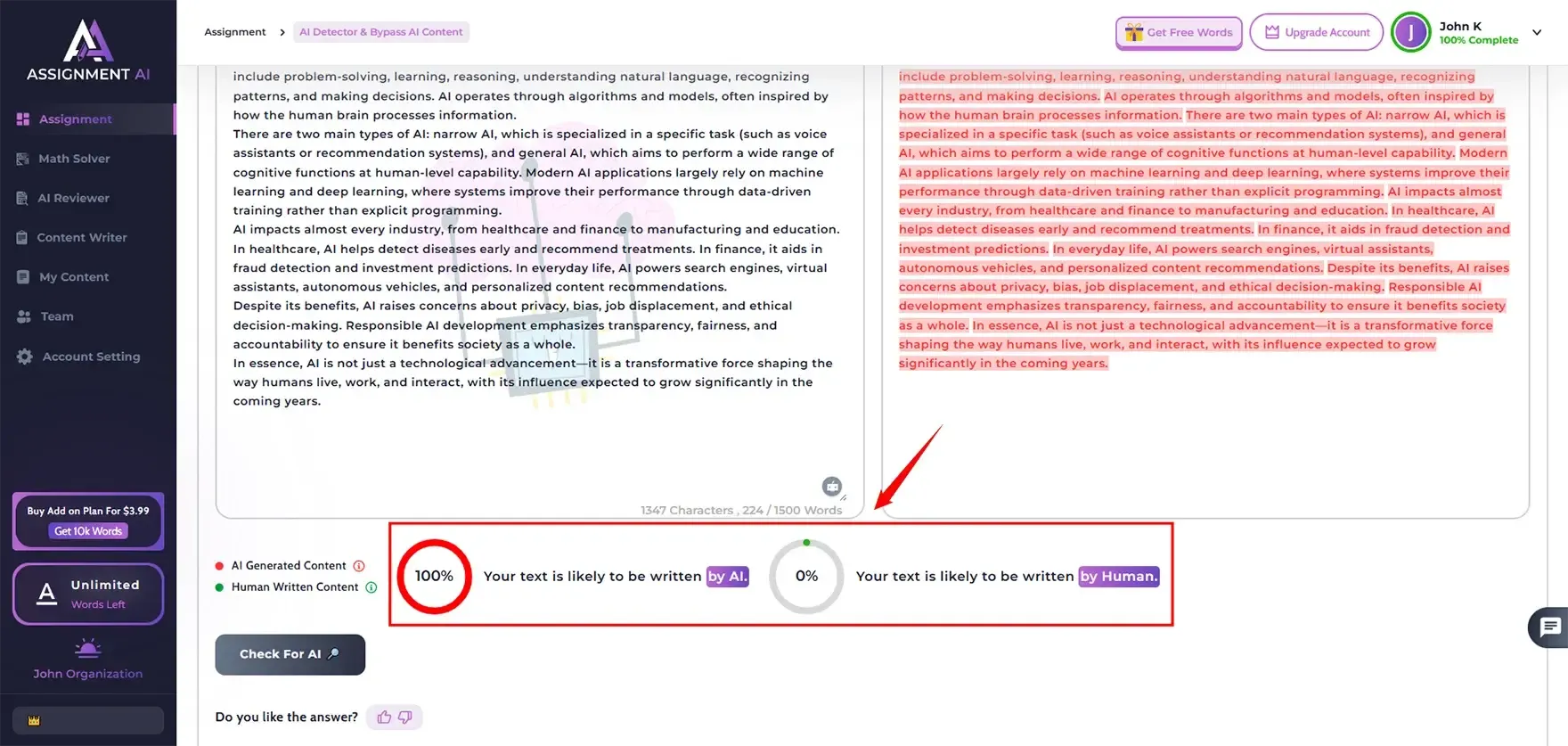
Result: 100% AI, 0% Human
3. Bypassai.io
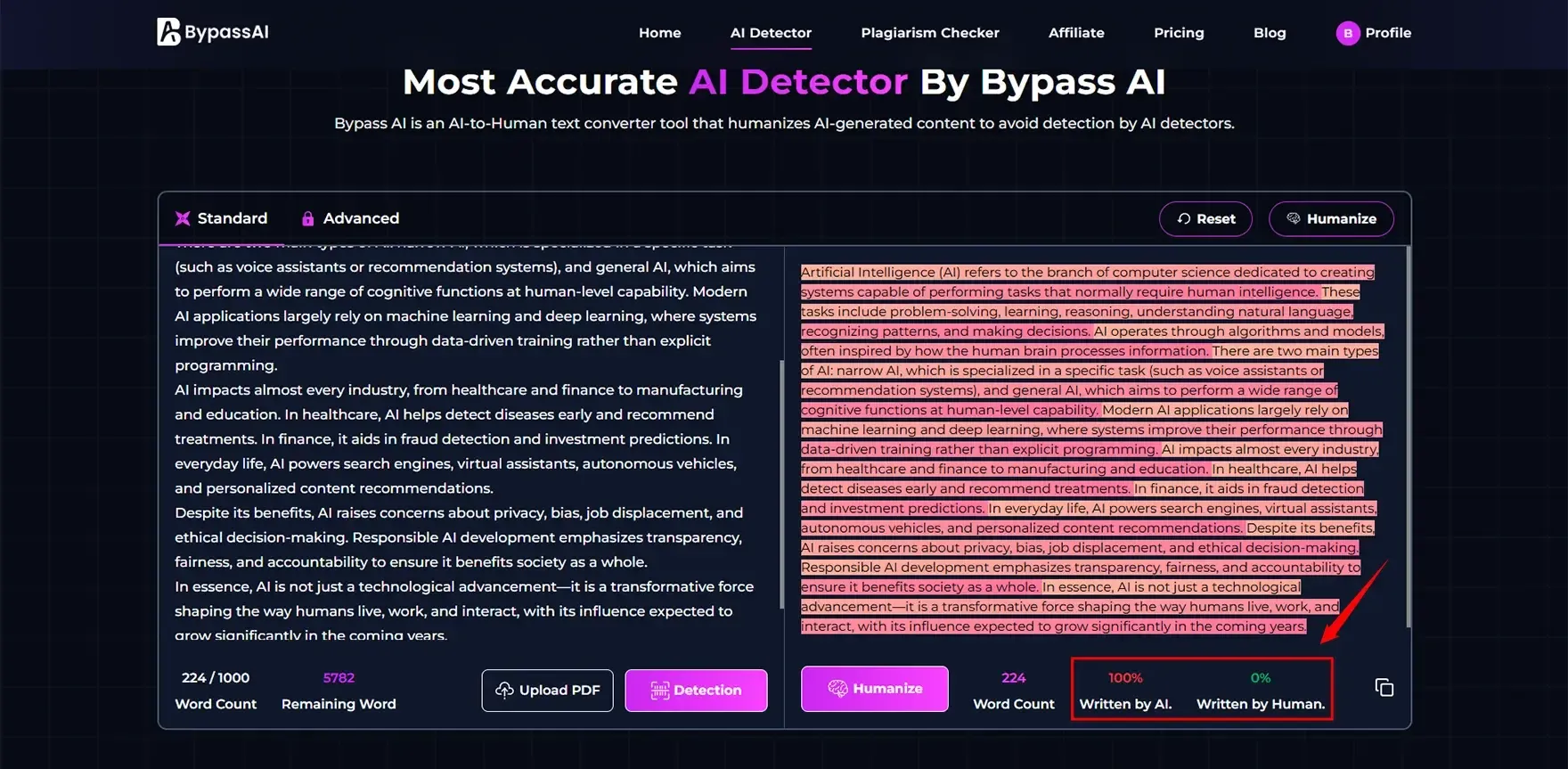
Result: 100% AI, 0% Human
4. GPTZero
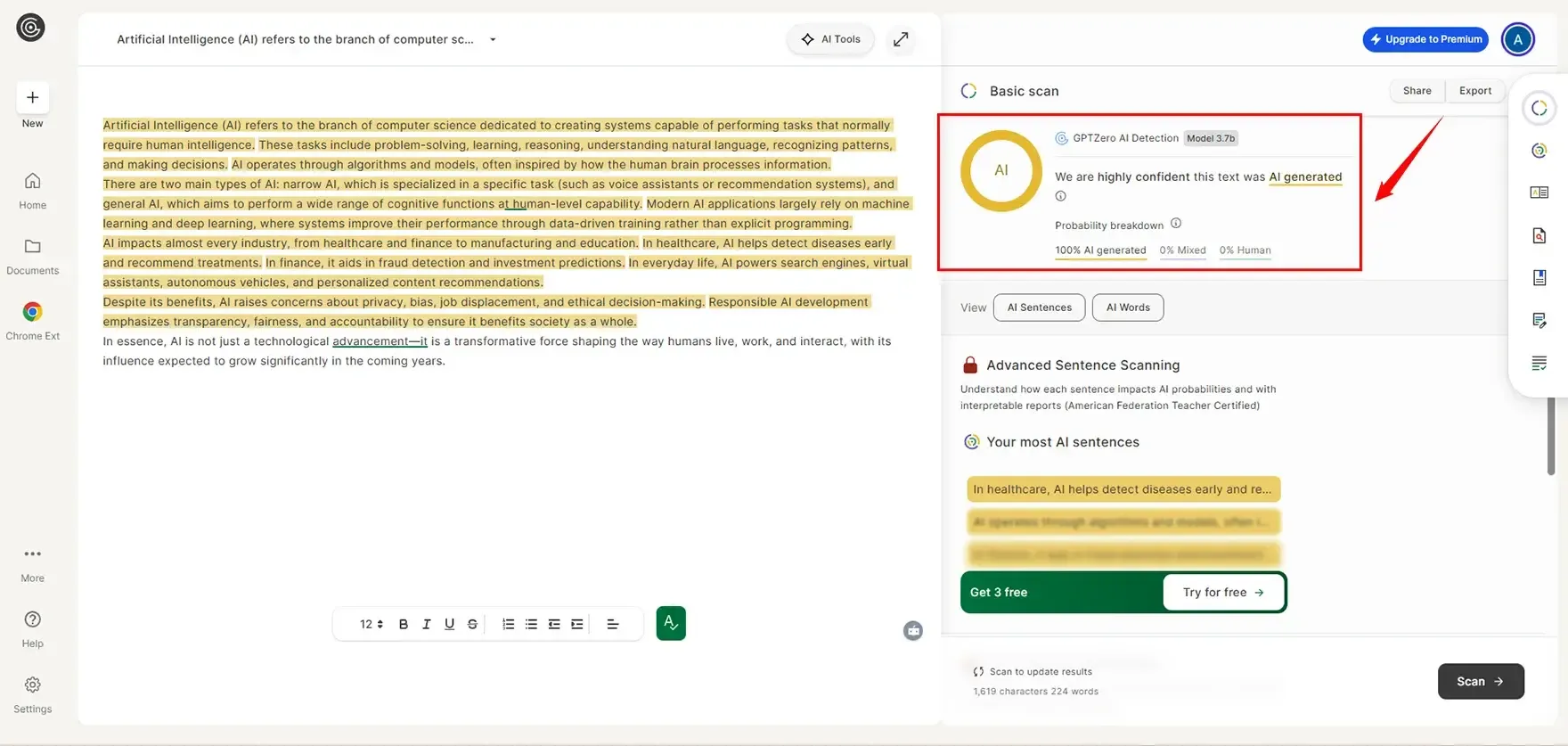
Result: 100% AI, 0% Human
5. Originality.AI
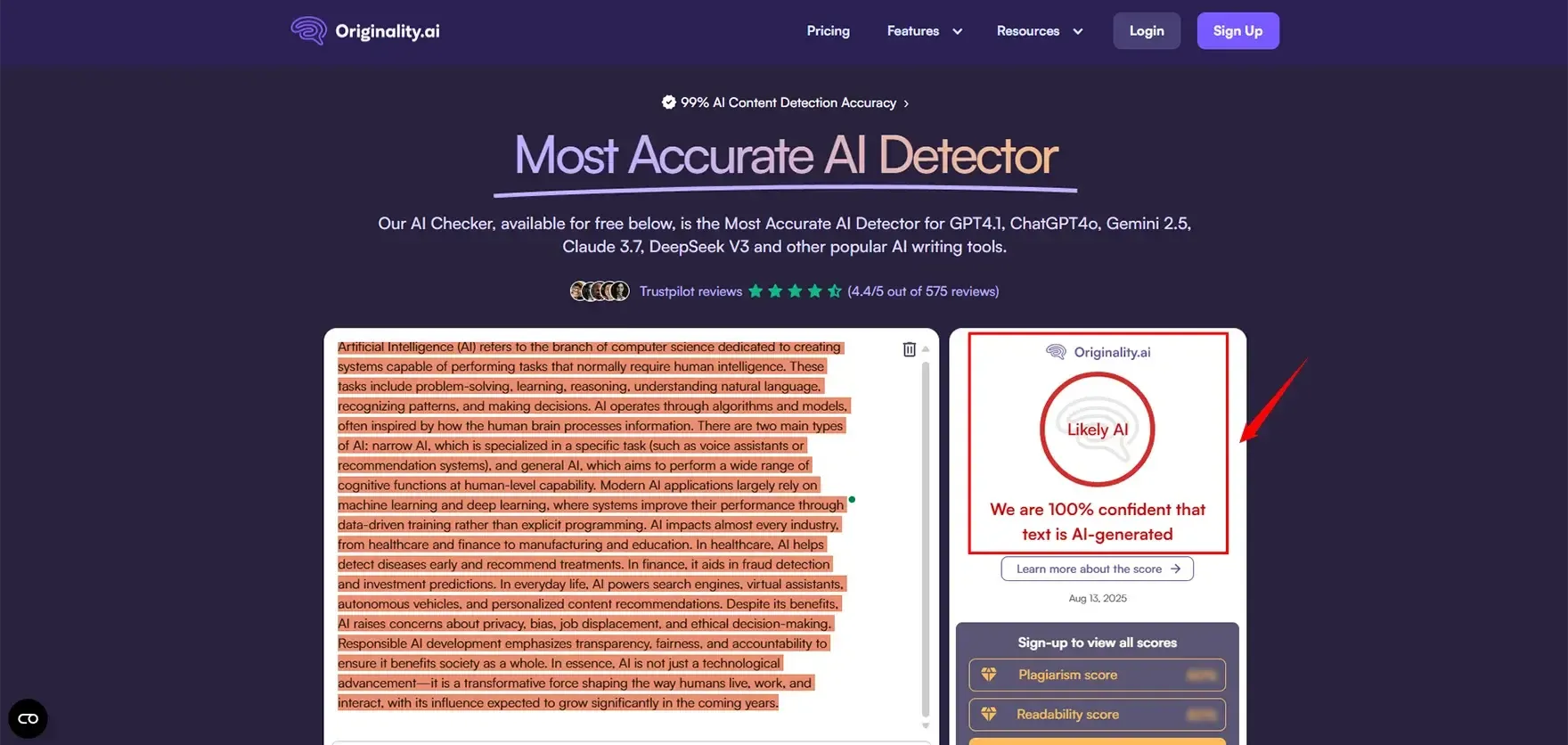
Result: 100% AI, 0% Human
Accuracy and Limitations
While Chat GPT5 content can be detected by most top detectors, the difficulty has increased significantly since the GPT5 release date in August 2025.
Detection accuracies of new, unedited GPT-5 text are mostly 94 - 96% based on the tool and the size of text in question.
Paraphrase (or edited) text especially of material that is mixed with human writing is more difficult to detect.
All detectors constantly train their tools again to stay on top of new tricks and escape routes.
Implications for Different Sectors
Education
Teachers use AI detectors to ensure student integrity is maintained.
Students should be aware that submitting OpenAI GPT5-generated content can have serious consequences.
Publishing and Journalism
Publishers rely on AI checkers to guarantee the originality and credibility of articles.
Journalists must clearly disclose any use of AI in content generation, following both EEAT and Google’s transparency guidelines.
Academic Research
- Upholding research authenticity is critical; journals and institutions now use AI detection in peer review processes.
Content Marketing
Brands need unique, engaging messaging to build reputation and rank well on Google.
Excessive, undisclosed AI use can risk SEO penalties and loss of audience trust.
Future of AI Detection Technology
Smarter, adaptable models: Detectors like aichecker.pro will keep using the latest AI to spot even subtle traces of machine-generated text, including style, logic, and metadata clues.
Possible regulatory changes: Expect new rules around AI disclosure, especially for publishers and educators.
Near-real-time detection: As technology matures, checking content will become as routine as a spell check.
Best Practices for Content Verification
Always scan critical content with a leading detector (like aichecker.pro).
Disclose AI-generated or AI-assisted writing to your audience.
Blend authentic human insights with AI support—for both quality and compliance.
Stay up-to-date on detection tool updates and methods.
Conclusion
GPT5's advanced capabilities may raise the bar, but original, trustworthy content is still within reach when you use the right tools. Since the GPT5 release date in August 2025, the need for reliable detection has become more critical than ever.
aichecker.pro keeps you one step ahead, offering powerful AI detection built on expertise, constant innovation, and a strong commitment to privacy and transparency. Whether you’re an educator, publisher, marketer, or researcher, trust aichecker.pro to help you protect your reputation, boost your search rankings, and guarantee genuine content in an AI-driven world.
Upload your text to AIChecker.pro today for peace of mind because your integrity, credibility, and audience deserve nothing less!
FAQs
1. What is GPT-5?
GPT-5 is OpenAI’s latest AI model, released in August 2025, capable of generating human-like text, images, audio, and video.
2. Why is GPT-5 harder to detect?
GPT-5 mimics human writing style, tone, and reasoning better, making it more challenging for AI detectors to identify.
3. How does aichecker.pro detect AI content?
It uses statistical analysis, machine learning, linguistic pattern checks, and evolving detection models to spot AI-generated text.
4. Can GPT-5-generated content be fully undetectable?
Raw GPT-5 text can be detected with up to 96% accuracy, but heavily edited or mixed human-AI content is harder to identify.
5. Why is AI detection important for educators?
It ensures academic integrity by helping teachers verify that students submit original work and avoid plagiarism.
6. What industries benefit from AI detection tools?
Education, publishing, journalism, research, and marketing all rely on AI detection to protect trust and originality.
7. What are best practices for avoiding AI content issues?
Disclose AI use, combine AI output with human input, and regularly scan content using trusted detection tools like aichecker.pro.

Nathan Porter
Content writer at @Aichecker
I am a content writer at AI Checker Pro, where I craft engaging, SEO-optimized content to enhance brand visibility and educate users about our AI-driven solutions. My role involves creating clear, impactful messaging across digital platforms to drive engagement and support company growth.



